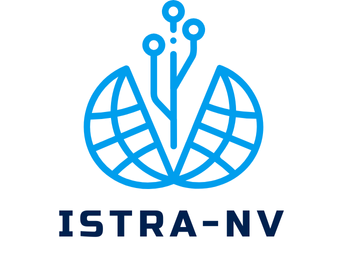A hearing impairment can pose significant challenges for individuals and their families. However, training dogs to recognize and alert to specific sounds can foster independence and enhance safety. This guide offers practical methods for using a dog's natural instincts to support hearing-impaired loved ones. By empowering both the human and canine companions, you can create a seamless partnership that boosts confidence and enhances communication. Explore effective training techniques and discover how these loyal animals can become invaluable allies in daily life.
Understanding the Needs of Hearing-Impaired Individuals
Exploring the unique challenges and solutions for enhanced communication and support.
This might interest you : Creating a Calm Haven: Effective Tips for Setting Up a Tranquil Space for Your Anxious Ferret
Impact on Daily Life
Hearing impairment significantly affects daily interactions and communication. Individuals with hearing impairment often face challenges in environments where auditory cues are crucial. This can lead to feelings of isolation and frustration. The need for effective communication methods and support systems becomes essential for improving their quality of life.
Companionship and Support
For the hearing-impaired, companionship from trained service dogs offers profound benefits. These dogs are not only companions but also act as vital support systems. Their training enables them to alert their owners to important sounds like doorbells, alarms, or approaching vehicles, thus enhancing safety and independence.
Topic to read : Building Bonds: A Comprehensive Guide to Earning Your Rescue Dog”s Trust from New Family Members
Emotional Benefits
The presence of a service dog provides emotional support, reducing stress and anxiety. The bond between a service dog and a hearing-impaired individual fosters a sense of security and companionship. This relationship can improve overall well-being and offer a more fulfilling life experience.
Bullet Points:
- Hearing impairment impacts social interactions.
- Service dogs alert to crucial sounds.
- Emotional support from dogs reduces stress.
By understanding and addressing these needs, we can create a more inclusive and supportive environment for those with hearing impairments.
Selecting the Right Dog for Training
Crucial factors in choosing a service dog for sound alert training.
Key Characteristics
Choosing the right dog for training involves understanding specific temperament and behavior traits. A suitable service dog should be attentive, responsive, and possess a calm demeanor. These characteristics are essential for effective sound alert training.
Recommended Breeds
Certain breeds are particularly well-suited for service roles due to their innate qualities. Labrador Retrievers, Golden Retrievers, and Poodles are commonly recommended for their intelligence and trainability. These breeds often exhibit the temperament necessary for successful sound alert training.
Assessing Temperament
Evaluating a dog's temperament is crucial in determining its potential as a service dog. Observations should focus on the dog's reaction to unfamiliar situations, its ability to remain composed, and its eagerness to learn. A thorough assessment ensures the selection of a dog that is not only suitable but thrives in a service capacity.
Bullet Points:
- Attentive and responsive nature
- Calm demeanor
- Ability to adapt to sound alert tasks
Selecting a dog with the right temperament and behavior is fundamental. This ensures the dog can effectively assist and enhance the life of a hearing-impaired individual through specialized training.
Training Techniques for Sound Recognition
Delving into effective methods for teaching dogs to recognize and respond to sounds.
Basic Sound Recognition Training
Training a dog for sound recognition begins with introducing simple auditory cues. The process involves associating specific sounds with actions or rewards. For instance, using a bell or a clap, trainers can encourage a dog to respond by offering treats or praise. This foundational step is crucial for developing alert training skills.
Advanced Alert Techniques
Once basic recognition is established, dogs progress to advanced alert techniques. This involves teaching them to differentiate between various sounds and respond appropriately. For example, a dog might learn to nudge its owner when the phone rings or lead them to the door upon hearing a doorbell. Consistent practice enhances their ability to perform these complex tasks.
Reinforcement Strategies
Reinforcement strategies play a vital role in effective training. Positive reinforcement, such as treats or verbal praise, encourages dogs to repeat desired behaviors. This method strengthens the association between a sound and the required response, ensuring reliable performance in real-life situations.
Key Points:
- Start with simple auditory cues
- Progress to differentiating complex sounds
- Use positive reinforcement consistently
Through structured dog training methods, dogs can master sound recognition and offer invaluable support to hearing-impaired individuals.
Common Challenges in Training and Solutions
Tackling obstacles in sound recognition training for service dogs.
Identifying Training Obstacles
Training dogs for sound recognition can present several challenges. Common issues include difficulty in maintaining the dog's focus during training sessions and the dog's reluctance to respond to specific sounds. These behavioral issues can hinder progress and require targeted strategies to address them effectively.
Overcoming Behavioral Issues
Addressing behavioral issues during training involves understanding the root causes, such as anxiety or lack of motivation. Implementing structured routines and using positive reinforcement can help in overcoming these obstacles. For instance, gradually increasing the complexity of tasks while maintaining a consistent reward system can enhance the dog's engagement and response to training.
Importance of Patience and Consistency
The role of patience and consistency in training cannot be overstated. Trainers must be prepared to repeat exercises and maintain a calm demeanor, even when progress seems slow. Consistency in commands and rewards ensures that the dog learns to associate sounds with specific actions reliably.
Strategies for Success:
- Identify and address root causes of behavioral issues
- Use structured routines with positive reinforcement
- Maintain patience and consistency throughout the process
By understanding and addressing these training challenges, trainers can develop effective solutions, ensuring dogs are well-prepared to assist hearing-impaired individuals.
Success Stories and Testimonials
Real-life transformations through service dog partnerships.
Real-Life Examples
Success stories abound, showcasing the profound impact trained dogs have on hearing-impaired individuals. One notable example involves a Labrador named Max, who transformed his owner's life by alerting her to emergency alarms and doorbells. Such personal experiences highlight the effectiveness of tailored training outcomes.
Emotional Impact
The emotional connection between handler and service dog is immeasurable. Owners frequently express how their dogs not only serve as aids but also become family members. This bond enhances the emotional well-being of both parties, creating a symbiotic relationship that fosters mutual growth and understanding.
Community Feedback
Community feedback often emphasizes the transformative power of these partnerships. Shared experiences reveal how service dogs facilitate independence and confidence in their handlers. Testimonials frequently describe how these animals offer unwavering support, significantly improving the quality of life.
Bullet Points:
- Success stories highlight life changes.
- Emotional bonds enrich both dog and owner.
- Community experiences underscore the value of service dogs.
Through these success stories, it is evident that the right training outcomes lead to enhanced independence and emotional well-being for hearing-impaired individuals. The shared personal experiences within the community further validate the importance of these remarkable partnerships.
Resources and Support for Training
Exploring avenues for effective dog training and community engagement.
Recommended Books and Online Resources
For those embarking on dog training, numerous training resources are available. Books like "The Art of Raising a Puppy" and "Training the Best Dog Ever" offer comprehensive guidance. Online platforms, such as the American Kennel Club's website, provide valuable insights into sound alert training. These resources are essential for understanding fundamental techniques and advanced methods.
Organizations Providing Assistance
Several organizations specialize in professional support for training service dogs. The Hearing Dogs for Deaf People and Assistance Dogs International are renowned for their expertise. They offer structured programs and community programs that facilitate learning and development. Engaging with these organizations ensures access to expert knowledge and practical training strategies.
Importance of Support Groups
Joining support groups can significantly enhance the training experience. These groups offer a platform for shared learning and mutual encouragement. Members can exchange tips, discuss challenges, and celebrate successes. This collective approach fosters a supportive environment, vital for both handlers and their dogs.
Key Points:
- Books and online resources provide foundational knowledge.
- Organizations offer structured training resources.
- Support groups facilitate shared experiences.
By leveraging these resources and support, individuals can effectively train service dogs, enhancing the quality of life for the hearing-impaired community.
The Emotional Bond Between Dog and Owner
Exploring the profound connections that enhance emotional well-being.
Psychological Benefits
The emotional benefits of having a trained service dog for hearing-impaired individuals are profound. This human-animal bond offers psychological advantages, such as reduced anxiety and increased confidence. The companionship of a service dog provides a constant source of support, helping to alleviate feelings of isolation and stress.
Strengthening the Bond
Training and shared experiences play a crucial role in strengthening the human-animal bond. Engaging in training activities together enhances understanding and cooperation between the dog and its owner. These shared moments foster a deeper companionship, resulting in a more effective partnership. As the bond grows, the dog becomes more attuned to the owner's needs, further enhancing their emotional connection.
Long-Term Impact
The long-term impact of such companionship on mental health and well-being is significant. Over time, the presence of a service dog can lead to improved emotional stability and a more fulfilling life experience. This enduring human-animal bond not only enhances daily interactions but also offers a sense of security and belonging.
Key Points:
- Emotional benefits include reduced anxiety.
- Training strengthens the human-animal bond.
- Long-term companionship improves mental health.
The emotional benefits derived from this companionship underscore the importance of service dogs in enhancing the quality of life for hearing-impaired individuals.











